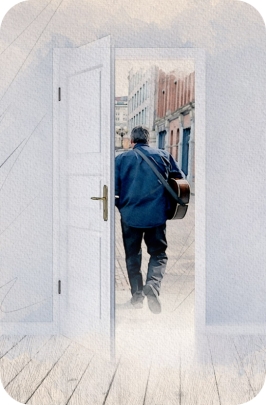Black History Images That Live On: A Bridge in Selma
A bridge in Selma 60 years later
One of the things Black History Month does is remind us of the significant contributions African American history has made to American history itself.
In 2025, along with the 50th year of the Black History Month Celebration, we will commemorate the 60th anniversary of the signing of the Voting Rights Act. Many historians believe that, along with the Civil Rights Act of 1964, the United States was finally fulfilling its promise of “liberty and justice for all.”
Three marches led by African Americans across the Edmund Pettis Bridge in Selma, Alabama, in March of 1965 inspired and would become the catalyst for that historic piece of legislation.
Civil rights marchers stopped just across the bridge
On Sunday March 7, 1965, 600 Civil Rights Marchers, young and old, walked across the Edmund Pettis Bridge in Selma, Alabama toward the State Capitol in Montgomery. They were going to make their case to the governor that, just like white people, black people deserved the right to vote, befitting a nation of multicultural people like the United States.
The marchers made it just over that bridge before being brutally attacked by State Troopers and local police.
Two days later Dr. Martin Luther King, Jr., and other civil rights leaders led a group of marchers across the Edmund Pettis Bridge where, due to a temporary injunction against further marches, they chose to stop at the spot of the earlier attack. After a moment of silence and prayer they went back over the bridge in what became known as Turn Around Tuesday.
President Johnson addresses Congress and the Nation
The President of the United States, Lyndon Johnson, clearly understood the importance of Selma to voting rights—and American culture in general—when he addressed a joint session of Congress six days later on March 15th in what has become known as the We Shall Overcome speech:
I speak tonight for the dignity of man and the destiny of democracy…At times history and fate meet at a single time in a single place to shape a turning point in man’s unending search for freedom. So it was at Lexington and Concord. So it was a century ago at Appomattox. So it was last week in Selma, Alabama…Their cause must be our cause, too…it’s all of us who must overcome the crippling legacy of bigotry and injustice. And we shall overcome.
Ban is lifted, “His truth is marching on”
A week later, on March 21st, the ban against marches was lifted and the 54 mile march from Selma across the Edmund Pettis Bridge to Montgomery began. A five day walk for the history books. African-American history. American history.
On March 25th, as many as 25,000 civil rights marchers met just below the Capitol steps to listen to Dr. King tell them that, indeed, “the arc of the moral universe is long, but it bends toward justice.”
“How long?” they asked.
“Not long,” he replied before finishing with, “His truth is marching on.”
The Voting Rights Act of 1965
President Lyndon Johnson signed the Voting Rights Act into law on August 6, 1965. Along with the Civil Rights Act of 1964, it is considered among the most significant pieces of legislation of the 20th century—for black people, black history, and American culture as a whole.
A moment in American History/Black History where there was almost a feeling of teamwork among the three branches of Government—Executive, Legislative, and Judicial—including the Supreme Court; making real the ideals of the Founders.
A symbol of those ideals made real: the Edmund Pettis Bridge.
Much has changed
Dr. King could have scarcely imagined that sixty years after its signing the Voting Rights Act would be in many ways dying of a thousand cuts.
And these days, instead of truth marching on, he would discover it is often lies and falsehoods leading the way before truth has even had a chance to put on its boots.
The philosopher, George Santayana, told us “Those who cannot remember the past are condemned to repeat it.”
Then again, we might choose to remember moments in history we would like to repeat. Moments like the one in Selma, Alabama, on the Edmund Pettis Bridge sixty years ago. Moments where we truly are a nation of multicultural people and in a way everyone a civil rights leader.
A personal connection
My wife and I had the good fortune to be in Selma in 2015 to celebrate the 50th anniversary of Bloody Sunday. The streets were alive with African American history and culture and American flags.
We walked across the Edmund Pettis Bridge with tens of thousands of others at a celebration for the ages hosted by African Americans for all of America to share.
We were there when President Obama concluded his remarks by saying:
“We honor those who walked so we could run. We must run so our children soar. And we will not grow weary. For we believe in an awesome God, and we believe in this country’s sacred promise.”
The story continues
Part of this country’s sacred promise is the right for all citizens to vote. A sacred promise restated in the John R. Lewis Voting Rights Advancement Act of 2023. Legislation that passed the House but not the Senate, named after Congressman John Lewis, who, as a young man, led that march across the Edmund Pettis Bridge on Bloody Sunday.
Once We Cross That Bridge
I continue to join groups who visit sites, hear stories, and meet people who were part of the Civil Rights Movement and in Selma in 1965. Charles Mauldin is one of those people. He was number six in line behind John Lewis on that bridge on Bloody Sunday. He continues to inspire me to do the work of creating a more perfect union where black history is celebrated like every other.
Charles says the Movement was built on three pillars. Prayer, action, and music.
Here is a link to a song I wrote inspired by the Bridge we are all invited to cross and the promise that beckons from the other side.
It is early Sunday morning here in Selma, Alabama
We’re about to cross the Edmund Pettis Bridge
We’ve been inspired these days and nights
By those with faith who fought the fight
For us it’s somehow coming down to this
The battle’s far from over but their faith helps us believe
That if we keep on tryin’ we can be the change we seek
On this Pilgrimage we’re takin’ something in us has awakened
As we walk where others walked and where they dreamed the dream
Refrain
Once we cross that bridge, old friend, we can’t go back to where we’ve been
Though we return from where we came nothin’ is the same
We line up two by two and we begin to walk in silence
Is it ours or other’s footsteps that we hear
We are now joining in the chorus
Of all those who’ve gone before us
And all those who some day will appear
We’ll cross the bridge and form a circle on the other side
Arm in arm sing We Shall Overcome and realize
Celebrate, commemorating most of all we’re consecrating
Those who crossed the bridge before and all they sacrificed
Refrain
Once we cross that bridge, old friend,
We can’t go back to where we’ve been
Though we return from where we came nothin’ is the same
A bridge to the Civil Rights Movement
In many ways the Civil Rights Act was a culminating moment in the Civil Rights Movement of the 1950’s and 60’s. Some of the most important history in my lifetime. I created a video—songs and visual storytelling—that celebrates that special time. Here is a link to what I call Remembering the Dream.


